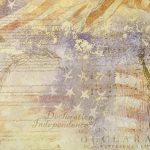Flag Day in the United States: A Symbol of Unity and National Identity
Every June 14, the United States observes Flag Day, a day dedicated to honoring one of its most recognized national symbols, the American flag. While it’s not a federal holiday and most businesses stay open, it holds an important place in American culture, especially as a moment to reflect on the history, values, and unity that the flag represents.
Flag Day commemorates the adoption of the U.S. flag by the Second Continental Congress on June 14, 1777. At that time, the American colonies were fighting for independence from Britain. The new flag, with thirteen alternating red and white stripes and thirteen stars on a blue field, represented the unity of those thirteen original colonies. Over time, stars were added to represent each state as the country expanded, bringing us to the fifty-star flag we know today.
For many Americans, the flag is more than just a symbol; it’s a representation of ideals such as freedom, justice, and resilience. That’s why Flag Day, although more modest than the Fourth of July, is still marked by ceremonies, parades, school programs, and the display of flags at homes, businesses, and public buildings. Some communities hold special events with speeches, music, and local traditions. In schools, students might learn about the flag’s history, proper ways to display it, and what it means to different people across the country.
For international students and professionals learning English in the U.S., Flag Day is more than a vocabulary lesson, it’s a chance to better understand American values and national identity. Observing how a country celebrates its symbols helps you connect with the culture in a deeper, more personal way. You’ll notice how often the flag appears in everyday life, from front porches to government buildings, and you’ll begin to understand the meaning behind these gestures.
Discussing Flag Day in an ESL classroom also opens the door to meaningful conversations. What symbols represent unity and freedom in your home country? How are national holidays observed there? These types of discussions not only expand your vocabulary but also offer the chance to share and compare cultural perspectives in a respectful and thoughtful environment.
Flag Day may not be widely celebrated with fireworks or big parties, but it carries quite significance. It reminds Americans of their shared history and diverse identities, all represented under one flag. For ESL learners, it offers a meaningful way to explore language and culture together, and to feel just a little more at home in a new country.
Personal Reflection
- What symbols are important to you personally or culturally?
Vocabulary List
| Word/Phrase | Definition |
| Flag Day | A U.S. holiday on June 14 celebrating the adoption of the national flag |
| Symbol | Something that represents an idea, value, or group |
| Unity | The state of being joined together or in agreement |
| Independence | Freedom from control or rule by another country |
| Colonies | Lands ruled by another country; in U.S. history, the 13 British colonies |
| Stars and Stripes | A common nickname for the American flag |
| Represent | To stand for or symbolize something |
| Commemorate | To remember and honor an important event or person |
| Resilience | The ability to recover from challenges or difficulties |
| National identity | A sense of a nation as a whole, represented by shared symbols or traditions |
Contact us today to learn more about our services and how we can assist you.
E-mail: [email protected]
Phone: (954) 565 7607





